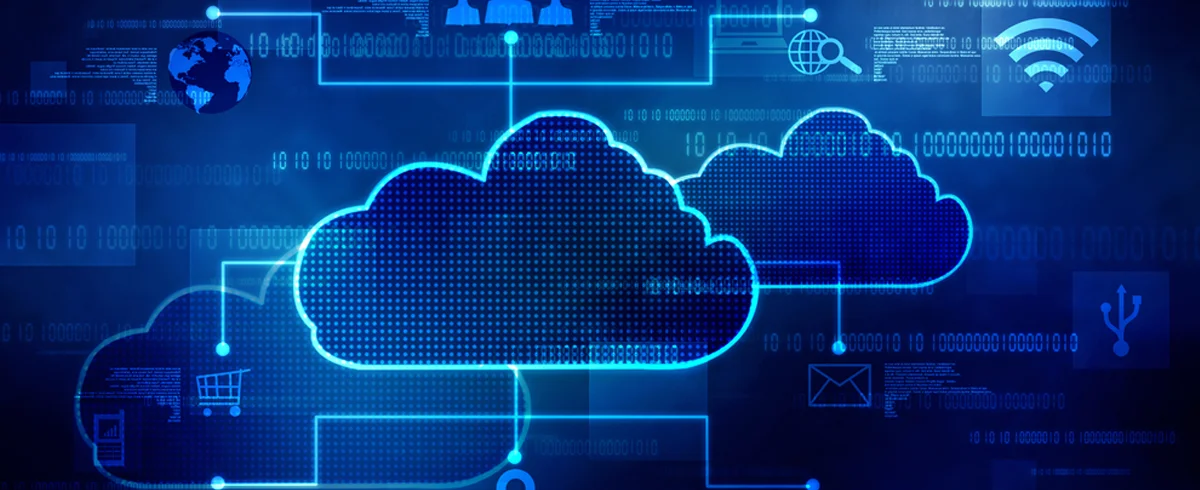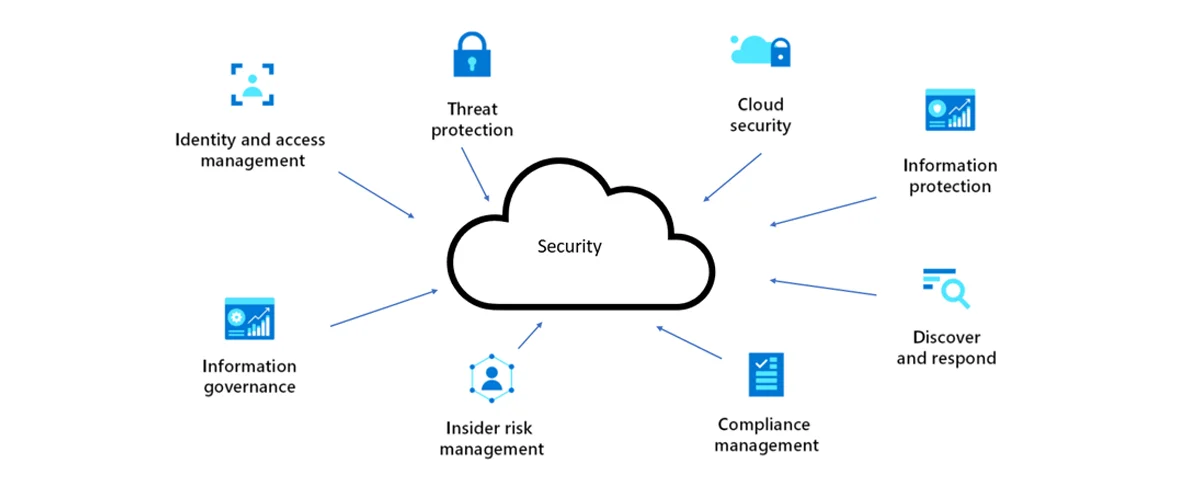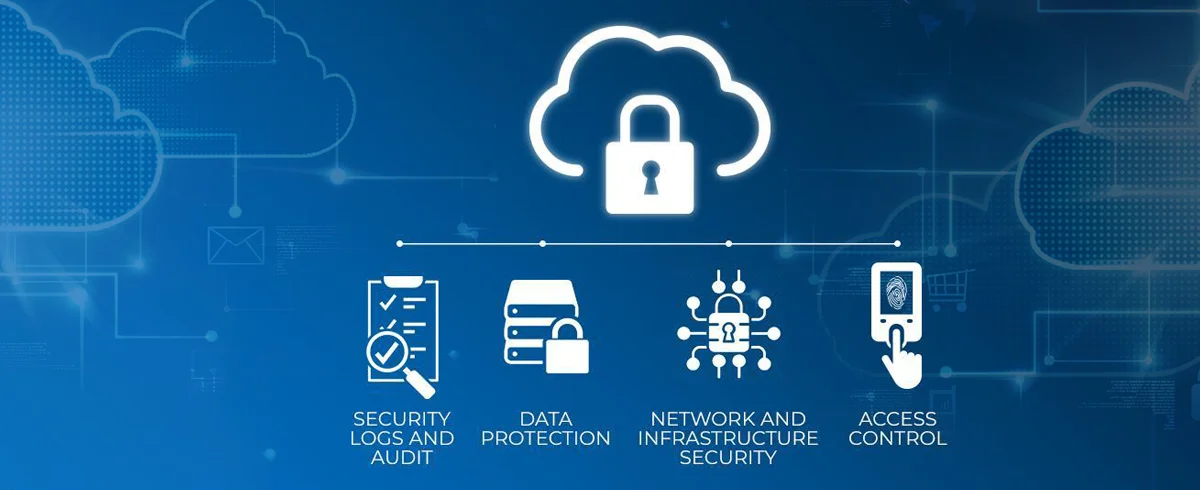Necessary Always Active
Necessary cookies are required to enable the basic features of this site, such as providing secure log-in or adjusting your consent preferences. These cookies do not store any personally identifiable data.
|
||||||
|
||||||
|
||||||
|

In the world of cybersecurity, nothing is more baffling than cloud security solutions. These solutions collectively make up technologies, policies, and controls that protect data, applications, and infrastructure. However, this field is filled with technical jargon, which makes it difficult to understand.
In this article, we will break down cloud security solutions by doing the following:
We’d like to point out upfront that the security of your cloud begins with how you set it up. So, while we’ll recommend many tools below, check out this webinar to get insights about simplifying your cloud setup.
Simple. Without it, your data is like a treasure chest with no lock. It’s just waiting for someone to take it. According to Gartner, by 2025, 99% of cloud security failures will be the customer’s fault. Let’s not be that statistic.
Here are a few reasons why cloud security is essential:
With that cleared up, let’s look at the components of cloud security solutions.

Below, we cover the critical parts of cloud security solutions. We’ll tell you what they do and why you need them. We also explain why you should care to have them. Finally, we’ll recommend tools.
It’s important to manage who has access to your sensitive information, as doing so protects operational integrity and security. IAM guards against illegal access and data breaches by managing user rights and enforcing security policies.
Tools: AWS IAM and Azure Active Directory. These tools manage user access and enforce multi-factor authentication (MFA) for added security layers.
Protecting data integrity and secrecy requires encryption. Encryption entails converting private data into an unbreakable code that can only be decoded using the right key. It protects stored data or data in transit, ensuring intercepted data stays unreadable to anyone unauthorized to access it.
Tools: AWS Key Management Service (KMS) and Azure Key Vault. These tools manage encryption keys and integrate with cloud services to safeguard data.
Network security is like a barrier around your cloud. It monitors and controls traffic to stop intrusions, protects your network by watching and managing incoming and outgoing traffic, and keeps out malicious actors.
Tools: Palo Alto Networks and Cisco Solutions offer advanced firewalls, intrusion detection systems (IDS), and intrusion prevention systems (IPS) to secure your network.

The rise of remote work has made securing every endpoint crucial to prevent security breaches. Endpoint protection is a security guard for all your devices, from laptops to smartphones. It defends against malware, ransomware, and other cyber threats targeting your devices.
Tools: CrowdStrike Falcon and Symantec Endpoint Security provide real-time threat detection and complete protection for all endpoints.
Compliance and governance ensure that cloud operations adhere to legal and regulatory standards. This helps you avoid legal penalties and builds customer trust.
Tools: You can personalize the frameworks and assessments in Microsoft Compliance Manager to various legal standards to help your businesses stay compliant.
Backup and disaster recovery form your contingency plan. They ensure they can restore data if they lose or corrupt it. They guarantee business continuity by protecting against data loss and enabling quick recovery.
Tools: Veeam Backup & Replication and Google Cloud’s Backup and DR services. These tools offer automated, scalable backup. They also have fast data recovery options.
SIEM solutions are the vigilant detectives in your cloud. They analyze real-time security alerts, enable rapid detection and response to security incidents, and enhance overall security visibility. SIEM solutions provide critical insights into security events, letting you avoid threats.
Tools: Splunk and IBM QRadar. These tools provide comprehensive monitoring, detection, and response to security incidents.
Actionable analytics help security managers to predict and defend against cyber threats. That is why threat intelligence is essential. It involves gathering and analyzing information about current and potential dangers.
Tools: FireEye and ThreatConnect offer practical threat intelligence, helping you stay ahead of cyber threats.
With the fundamentals covered, here’s the A to Z list of cloud security solutions:
Keeping the wrong people out of your data is vital for security. Access management ensures that only authorized users can access data and applications.
Why it’s essential: It prevents unauthorized access and potential data breaches.
Tools: AWS Identity and Access Management (IAM) and Azure Active Directory. These tools help manage user permissions, enforce policies, and provide multi-factor authentication (MFA) for added security.
A process for creating copies of data that can be restored in case of data loss or corruption. It ensures business continuity by protecting against data loss.
Why it’s essential: With backups, you can maintain crucial data permanently.
Tools: Veeam Backup & Replication and Google Cloud’s Backup and DR services. These automated tools offer quick and scalable data recovery options. They safeguard your data and can retrieve it on time.
Adherence to laws, regulations, and guidelines that protect data and maintain privacy. Compliance helps avoid legal penalties and builds customer trust.
Why it’s essential: Following GDPR, HIPAA, and CCPA rules is crucial. It helps you avoid fines and keep your reputation.
Tools: Microsoft Compliance Manager helps businesses stay compliant. It provides frameworks and assessments that you can personalize to various legal standards.
Converting data into an unreadable code to prevent unauthorized access. It protects data during storage or transmission by making it unreadable to unauthorized users.
Why it’s essential: Encryption ensures your data remains secure even if it’s intercepted.
Tools: AWS Key Management Service (KMS) and Azure Key Vault. These tools manage encryption keys. They also integrate seamlessly with cloud services to protect your data.
Security measures for devices that connect to your network. For example, laptops, smartphones, and tablets. It protects such devices against malware, ransomware, and other threats.
Why it’s essential: Securing all endpoints helps to prevent breaches.
Tools: Symantec Endpoint Security and CrowdStrike Falcon. These tools provide complete protection and real-time threat detection for all devices on your network.

A network security system that monitors and controls incoming and outgoing network traffic. It acts as a barrier between your network and potential threats.
Why it’s essential: Firewalls protect your network from unauthorized access and attacks.
Tools: Palo Alto Networks and Check Point provide advanced firewall solutions that detect and block malicious traffic.
governance measures ensure proper management and control of cloud resources and operations, ensuring they are used efficiently and securely.
Why it’s essential: Good governance helps keep things secure and compliant. It also optimizes how cloud resources are used.
Tools: CloudHealth by VMware and AWS CloudFormation. These tools provide visibility, automate resource management, and enforce governance policies in your cloud.
Security measures for environments using both on-premises and cloud resources. It provides comprehensive security across diverse environments.
Why it’s essential: It provides consistent protection of resources, whether they’re on-premises or in the cloud.
Tools: IBM Security and Cisco SecureX offer integrated security solutions. They cover hybrid environments and ensure seamless protection.
The process of ensuring that users are who they claim to be. It prevents unauthorized access by verifying user identities.
Why it’s essential: Screening users through security layers ensures that only legitimate users can access sensitive data.
Tools: Duo Security and Google Authenticator. These tools provide multi-factor authentication (MFA), adding extra layers of verification to secure user identities.
Grants users temporary access to resources only when needed. It reduces the risk of long-term access abuse and enhances security.
Why it’s essential: It limits potential damage from compromised accounts by minimizing the access window.
Tools: Azure AD Privileged Identity Management. This tool provides just-in-time access, reducing the risk of privileged account abuse.
Security measures for managing and securing Kubernetes clusters. It keeps containerized applications secure from threats.
Why it’s essential: As containerization grows, securing Kubernetes environments becomes essential to protecting your applications.
Tools: Aqua Security and Red Hat OpenShift provide total security for Kubernetes clusters. This includes scanning for vulnerabilities and checking compliance.
Logging and monitoring involve continuous recording and analysis of activities within the cloud environment. It helps with forensic analysis after an incident.
Why it’s essential: It helps detect and respond to security threats in real-time.
Tools: Splunk and AWS CloudTrail. These tools offer extensive logging and monitoring. They help you monitor all activities in your cloud.
Security solutions for managing mobile devices accessing your network. It ensures mobile devices are secure and compliant with company policies.
Why it’s essential: Rising mobile workforces also increase the likelihood of security breaches. Thus, securing mobile devices is critical to stopping data breaches.
Tools: Microsoft Intune and Ivanti’s MobileIron. With these tools, you can ensure workers’ devices follow security policies and protect sensitive data.
Measures to protect the integrity, confidentiality, and accessibility of networks. It prevents unauthorized access, misuse, or information theft.
Why it’s essential: Network security is the first defense against cyber threats.
Tools: Fortinet and Juniper Networks provide robust network security tools, such as firewalls, VPNs, and threat detection systems.
Integrating security into the lifecycle of cloud applications. It ensures that every stage of app development and deployment considers security.
Why it’s essential: Adding security to operations cuts vulnerabilities and boosts security.
Tools: DevSecOps and AWS CodePipeline. These tools add continuous security and compliance checks in development.
Regularly updating software to fix vulnerabilities. It prevents attackers from exploiting known vulnerabilities.
Why it’s essential: Updating software is critical to security.
Tools: Ivanti Patch Management and SolarWinds Patch Manager. These tools automate patching to keep all systems up-to-date and secure.
Security measures that protect against the advanced abilities of quantum computers. It ensures long-term data security through encryption methods that resist quantum attacks.
Why it’s essential: Quantum computing is evolving and can break encryption. Preparing for these future threats is necessary for data security.
Tools: IBM and Microsoft are developing quantum-safe encryption tools. The tools will keep your data secure, even in a post-quantum world.
It is the process of finding, assessing, and ranking risks and then taking measures to reduce and control the chance or impact of these risks. Different methods, including penetration testing, can be quite effective at identifying vulnerabilities.
Why it’s essential: Managing risk well cuts the chance and impact of security incidents, protecting your business and reputation.
Tools: RSA Archer and RiskLens offer risk assessment, mitigation planning, and reporting tools.
These are systems that analyze, in real time, any security alerts generated by applications and network hardware. SIEM improves security by allowing quick detection and response to security incidents.
Why it’s essential: SIEM solutions improve visibility into security events, helping you stay ahead of potential threats.
Tools: Splunk and IBM QRadar offer comprehensive SIEM solutions. They check, detect, and respond to security incidents. They also provide critical insights into your security.
This is the process of collecting and analyzing data about threats to your organization. It helps you know the kinds of threats to expect and gives you actionable insights to defend against them.
Why it’s essential: Knowing about threats helps you plan your defenses. It keeps your data and systems safe.
Tools: FireEye and ThreatConnect provide helpful intelligence to keep you ahead of new threats. They do this by offering insights into threat actors and their methods.
UBA refers to monitoring users’ activities to find anomalies indicating security threats, such as compromised accounts. It identifies suspicious behavior that traditional security measures might miss.
Why it’s essential: UBA improves security by finding anomalies and potential insider threats.
Tools: Exabeam and Securonix analyze user behavior and flag suspicious activities. They provide detailed insights into possible security issues.
A service that encrypts your internet connection by hiding your IP address to provide secure remote access.
VPNs ensure that remote network connections are secure and private.
Why it’s essential: VPNs protect your data from being intercepted. They also stop unauthorized access, especially when using public Wi-Fi.
Tools: NordVPN and Cisco AnyConnect. These tools offer secure, encrypted connections, protecting sensitive data on any internet connection.
Measures and tools that protect web apps from security flaws and attacks.
Why it’s essential: Web app security is crucial because it protects data and maintains app integrity.
Tools: Imperva and Akamai provide strong web application security tools that guard against common flaws and attacks.
XDR is a unified security approach that integrates many security products to give you a complete view of your security.
Why it’s essential: XDR solutions improve visibility, speed up threat detection and response, and reduce the time it takes to address security incidents.
Tools: Palo Alto Networks’ Cortex XDR and Trend Micro XDR offer integrated threat detection and response to cover many security layers.
Ensuring security investments deliver value and effectively protect against threats.
Why it’s essential: Demonstrating the effectiveness of your security measures helps justify the investment.
Tools: Any tool that offers broad protection at a fair cost will maximize ROI.
This security model assumes no trust by default, even from within the network. It strictly verifies each user and device that tries to access resources, reducing the risk of breaches from compromised accounts.
Why it’s essential: Zero-trust security protects sensitive data and resources by assuming that everyone is a threat to the system. This is especially true in cloud and highly distributed settings.
Tools: Zscaler and Okta provide zero-trust architecture. They ensure all access requests are verified before granting access.
That’s it! Cloud security solutions are many and varied, but we hope we have provided you with a good starting point in your implementation journey.
Take advantage of the solutions discussed above, and should you find the process challenging, just outsource!
As always, stay secure!
Sign up to receive our newsletter featuring the latest tech trends, in-depth articles, and exclusive insights. Stay ahead of the curve!